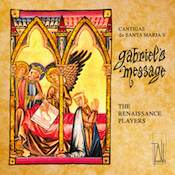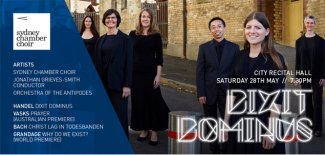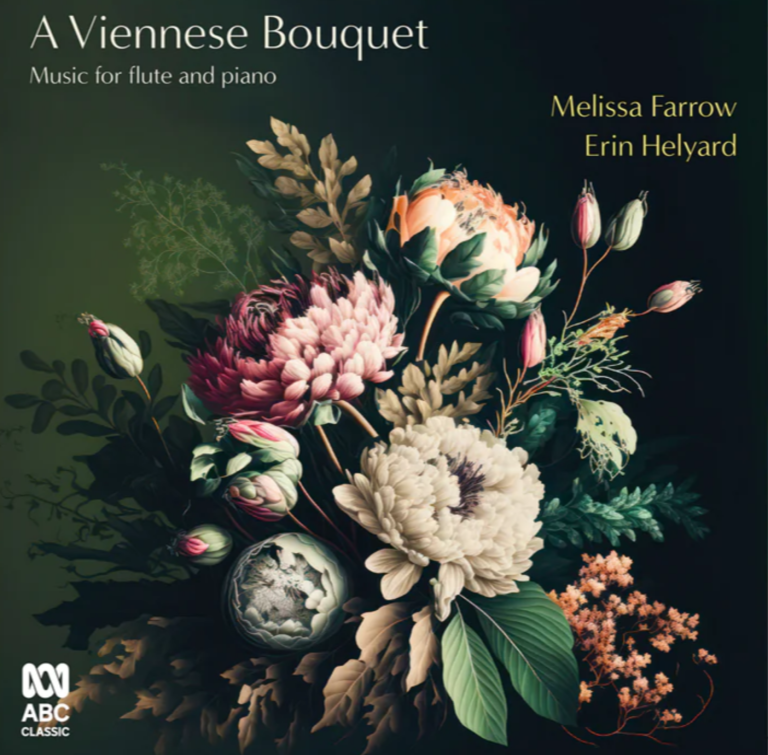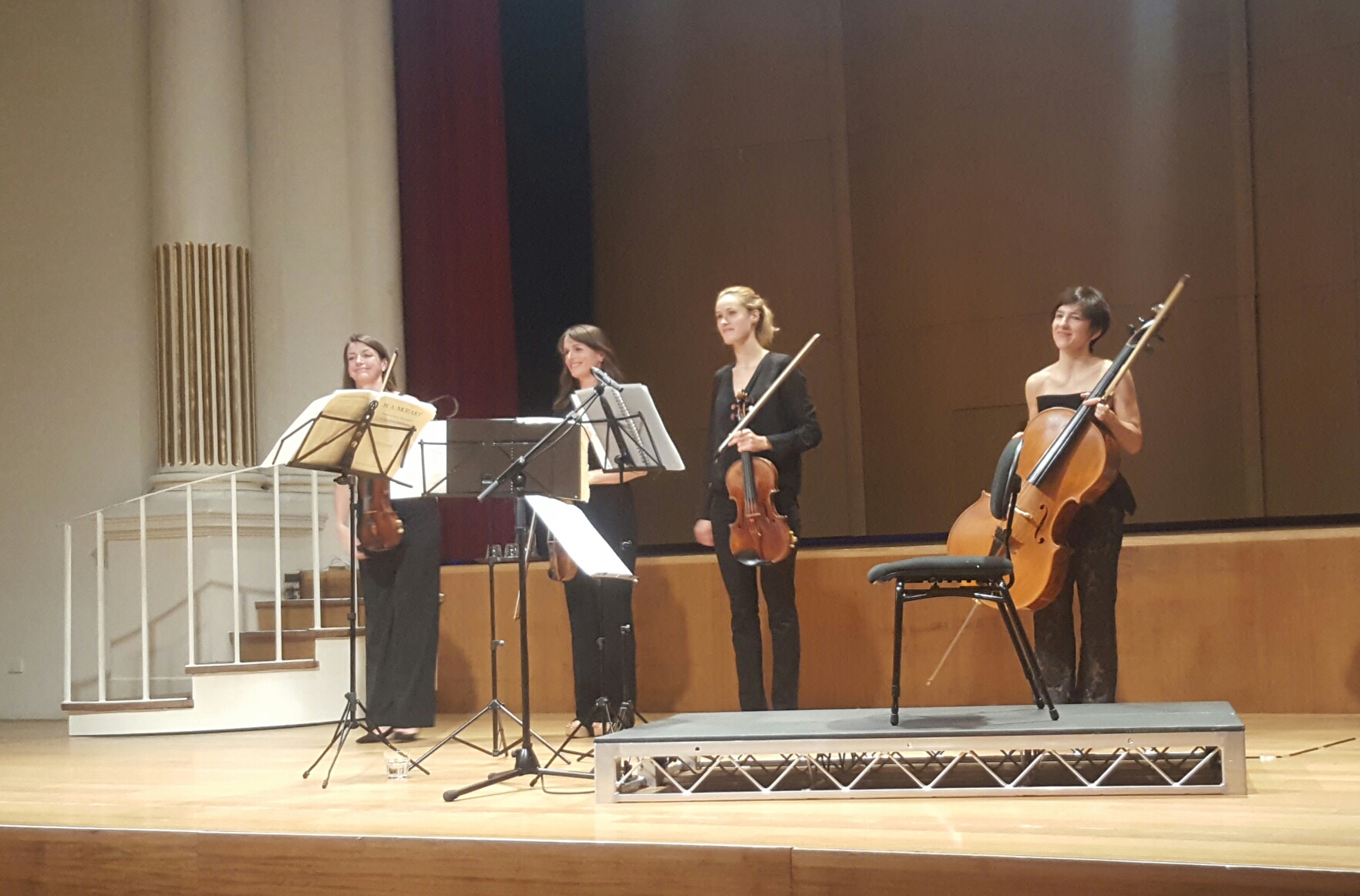CD Review: Gabriel’s Message/The Renaissance Players

Cantigas de Santa Maria Volume V, Gabriel’s Message
The Renaissance Players, Tall Poppies, TP232
Gabriel’s Message is the fifth and final volume in The Renaissance Players’ CD collection collectively called the Cantigas de Santa Maria. Gabriel’s Message continues the ensemble’s excellent performances in the style of the time, on replicas of ancient instruments. The recording is supported by detailed historical notes, a discussion of issues surrounding modern-day interpretation, and the full text and translations of the songs.
The history of this project driven by Winsome Evans, the director of The Renaissance Players, has been covered elsewhere. SoundsLikeSydney has also spoken with Winsome Evans about her journey with this project. Briefly, the cantigas are a collection of 420 monophonic medieval songs from Spain and Portugal, about the Virgin Mary. They were written between c. 1270 and 1290 under the direction of King Alfonso X El sabio (b Toledo, 1221; d Seville, l 1284), Spanish monarch, patron, poet, composer and King of Castile and León from 1252. Some of the cantigas are hymns of praise to the Virgin Mary, but most tell of miracles wrought by her and this CD even contains songs about the vandalisation of statues of the Virgin. Popular till the middle of the 15th century, the songs composed under Alfonso’s direction are the only cantigas which survive today.
Gabriel’s Message, which is dedicated to Gough Whitlam, contains just five tracks – and this is of numerological significance to the project as explained in the notes.
The recording opens with Macar poucos canatres, a cantiga performed without text in which two cow horn pipes (gemshorns), played by Winsome Evans, accompanied by a pair of frame drums (panderos), played by Andrew Lambkin, pursue each other in imitation through a haunting, rustic melody. The open intervals, pastoral-style improvisation and unusual glissandi set the mood for the experience of a style of music that is long gone.
The major piece on the CD is Bêeyto foi o dia, a fascinating 23 minute cantata in which the perfectly matched voices of sopranos Mina Karanidis and Belinda Montgomery take it in turns to sing, chant and speak the verses which alternate with the bigger choral ensemble singing the chorus. Accompanied by a band which includes harps, bells, baglama (a long-necked lute of Turkish origin) and gittern (a short-necked lute of the Middle Ages), the singers tell the tale of the birth of Mary to her parents Anna and Joachim. The narrative moves through the grief and despair of the couple’s infertility, the annunciation of Mary’s birth and the redemptive joy of her conception.
Poi-las figuras fazen dossantos renenbranca is a spoken and sung cantiga for soprano (Mina Karanidis) and two panderos. It is a rhythmically complex aeolian melody built on a recurring pattern of 24 beats in hemiola metres. Sung in measured and unmeasured rhythms, it tells of vandals who destroy sacred figures of the Virgin Mary.
Porque trobar e cousa en que jaz is the second instrumental number on the CD, a spirited dance, given an almost raucous rendition with the melody let loose by an ensemble of double reed instruments which includes shawms and zurnas (a Central Asian wind instrument). The percussion – notably the castanets, played by Barbara Stackpool – adds to the celebratory feel of this cantiga.
Finally there is the Pois que Deus quis da Virgen Fillo another longer cantiga followed by a dance of wild abandon. The fascinating storyline is narrated through exquisite singing and moments of high drama shaped by a variety of rhythms and ornamentation.
Gabriel’s Message recreates the music of a very distant time and place. Listening to its unique sound world I can well imagine the tales that were told as pilgrims gathered around a fire. Recreating the singing, the dancing, the rich colours and the exoticism of the Iberian peninsula of Alfonso X’s rule during the 13th century has been a labour of love and the fulfilment of a passion for this ensemble. In committing these sounds to disc and publishing their history, they have created a gift for the future.
The CD stands on its own merits as well as being an integral part of the 5 CD collection. Gabriel’s Message is a fine conclusion to a major project.
Shamistha de Soysa for SoundsLikeSydney©
Read our review of The Pilgrimage to Monserrat.





